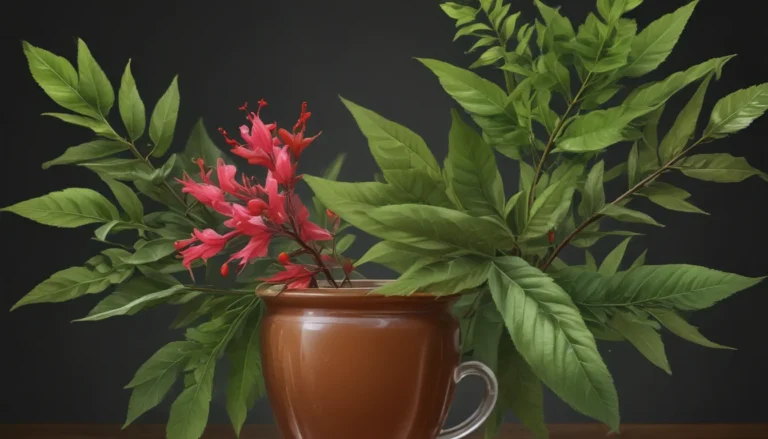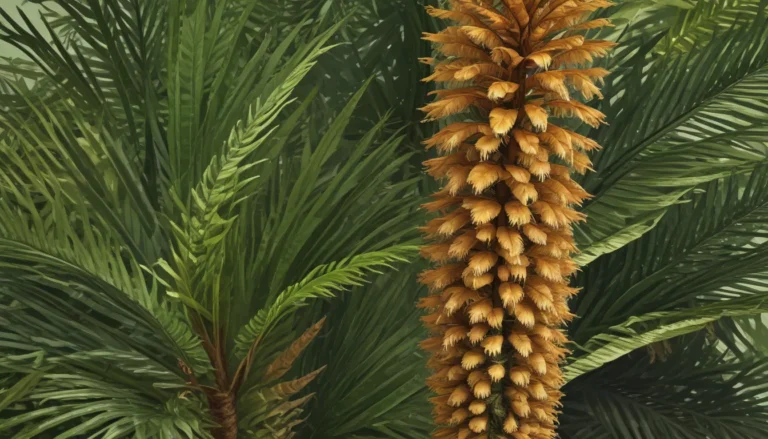The pictures we use in our articles might not show exactly what the words say. We choose these pictures to make you interested in reading more. The pictures work together with the words but don’t take their place. The words still tell you the important facts.
Welcome to the intriguing world of compass plants, where nature's wonders and ecological significance converge to create a captivating botanical spectacle. In this article, we will unravel 20 fascinating facts about the compass plant, shedding light on its unique characteristics, historical uses, and ecological importance. Whether you're a nature enthusiast, a botany aficionado, or simply curious about the marvels of the natural world, this compilation of facts is bound to spark your interest and deepen your appreciation for this remarkable plant species.
Unveiling the Mysteries of Compass Plants
Let's embark on a journey to discover the enigmatic world of compass plants, unravelling their intriguing features and the vital role they play in the ecosystem. From their symbolic significance to their historical roots, these plants are a testament to nature's resilience and adaptability.
Key Takeaways
- The Compass Plant, also known as Silphium laciniatum, is a remarkable perennial native to North America, with leaves that act as natural compasses and a towering height of up to 12 feet.
- Their deep taproots enhance drought tolerance, soil stability, and nutrient uptake, making them valuable for ecological restoration and garden landscapes.
Named for its Unique Leaf Orientation
The compass plant earned its name due to its leaves' remarkable ability to align themselves north and south, acting as natural compasses in the prairie landscape.
Towering Stature
With a striking height that can reach up to 12 feet, compass plants stand out as majestic figures in the vast expanse of prairies.
Deep Root System
Compass plants boast extensive taproots that can delve up to 15 feet into the ground, aiding in their ability to withstand drought conditions and provide stability to the soil.
Sunflower Family Member
Belonging to the sunflower family, compass plants produce bright yellow, sunflower-like blooms that attract pollinators such as bees and butterflies, contributing to ecosystem health.
Long Lifespan
These hardy plants can survive for up to 80 years in the wild, enduring the challenges of their environment with resilience and grace.
Traditional Medicinal Uses
Indigenous communities historically utilized compass plant roots and leaves for various medicinal purposes, including treating respiratory ailments and fevers, showcasing their cultural and ethnobotanical significance.
Habitat Range
Compass plants thrive in a variety of habitats, from prairies and woodlands to roadsides and disturbed areas, adapting to different environmental conditions with ease.
Wildlife Support
The nectar-rich flowers of compass plants provide essential nourishment for bees, butterflies, and other pollinators, playing a crucial role in supporting local wildlife populations.
Symbolic Significance
In some cultures, the compass plant holds symbolic significance, representing resilience, adaptability, and the ability to navigate life's challenges, adding a layer of cultural meaning to its botanical presence.
Historical Roots
Explorers and settlers in North America historically used the plant's orientation to navigate their travels, recognizing it as a natural compass and a valuable guide in the wilderness.
Drought Tolerance
Compass plants exhibit impressive drought tolerance, making them valuable additions to xeriscapes and landscapes facing water scarcity challenges.
Soil Adaptability
These plants can thrive in a range of soil types, from clay to sandy loam, showcasing their adaptability and versatility in different growing conditions.
Erosion Control
The extensive root system of compass plants plays a crucial role in preventing soil erosion, making them valuable assets for stabilizing landscapes and protecting the environment.
Ecological Restoration
Conservationists and environmentalists often utilize compass plants in ecological restoration efforts to rehabilitate native prairie habitats, ensuring the preservation of biodiversity and ecosystem health.
Architectural Beauty
The towering stature and striking blooms of compass plants make them popular choices for adding architectural interest to garden landscapes, enhancing their visual appeal and aesthetic value.
Ethnobotanical Significance
The historical uses of compass plants by indigenous communities underscore their ethnobotanical significance and cultural value, reflecting a deep connection between humans and nature.
Wildlife Habitat
The robust structure of compass plants provides shelter and nesting sites for small animals and birds, contributing to local biodiversity and ecosystem resilience.
Forage Potential
Compass plants offer forage potential for livestock, providing nutritious browse for grazing animals in certain regions and supporting sustainable agricultural practices.
Unique Leaf Characteristics
The deeply lobed leaves of the compass plant contribute to its distinctive appearance, adding visual interest and texture to natural settings, capturing the eye of observers with their intricate beauty.
Horticultural Appeal
Due to their unique characteristics and ecological benefits, compass plants are increasingly sought after for horticultural and landscaping purposes, showcasing their versatility and value beyond their natural habitats.
Embracing the Richness of Compass Plants
Compass plants truly are captivating specimens, embodying a blend of historical significance, cultural value, and ecological importance. From their towering presence to their adaptability, these plants are a cherished component of North America's natural heritage, deserving of our admiration and protection.
Exploring the Marvels of Nature
In conclusion, the compass plant stands as a fascinating member of the prairie ecosystem, with its unique characteristics and ecological contributions shaping the vibrant tapestry of the natural world. As a symbol of resilience and adaptability, the compass plant serves as a testament to the wonders of nature and the interconnectedness of all living beings. By delving into the intricate details of this remarkable plant species, we gain a deeper appreciation for the complexity and beauty of the world around us, fostering a sense of wonder and curiosity that inspires us to protect and preserve our precious environment.
Delving Deeper: FAQs
What are the ecological benefits of compass plants?
Compass plants play a crucial role in supporting diverse ecosystems. Their deep taproots help improve soil structure, prevent erosion, and enhance water infiltration. Additionally, their tall stature provides habitat for various wildlife species, contributing to the overall biodiversity of prairie landscapes.
Are compass plants suitable for home gardens?
While compass plants can be visually striking and beneficial in naturalized landscapes, their towering height and extensive root systems make them less practical for typical home gardens. However, they can thrive in large, open spaces or prairie restoration projects, adding a touch of wild beauty to the environment.
Join Us in Exploring Nature’s Wonders
Our commitment to delivering trustworthy and engaging content is at the heart of what we do. Each fact shared here is contributed by real users like you, bringing a wealth of diverse insights and information to our community. Trust in our dedication to quality and authenticity as you join us in exploring and learning about the marvels of the natural world. Together, let's celebrate the richness of compass plants and the intricate tapestry of nature that surrounds us.






